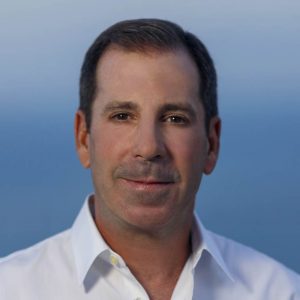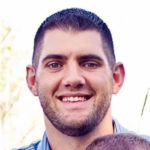
Mark Sanna, DC, ACRB Level II, FICC
Physician-referred patients are a source of pride for the fortunate practices that receive them. A physician’s referral is a strong endorsement. A base of referring physicians can generate large numbers of new patients, proliferate and if done properly, be self-sustaining. Yet, reaching out to local physicians is something that many chiropractors hesitate to attempt. They enjoy practicing in their comfort zone. This can be a colossal mistake!
Myths about why MDs don’t refer to DCs
- MDs hate DCs. – False
- MDs think that DCs are not real doctors. – False
- MDs think DCs are uneducated. – False
- MDs think that DCs will steal their patients. – False
- Most MDs simply do not know what DCs do. – True
The Rise of the Specialist
When adults have a fever, nasal congestion or a common conditions such as asthma, 43% seek medical care from a specialist rather than a primary care physician. Specialists include internal medicine sub-specialists, neurologists and obstetrician- gynecologists. Many patients believe that specialists are better able to treat specific conditions than general physicians. The nation’s shortage of primary care physicians (PCPs) is also leading patients to obtain medical services from specialists. By 2020 there will be an estimated shortage of 45,000 PCPs, according to the Association of American Medical Colleges.
Work Your Practice as a Specialist Practitioner
Why are specialists so busy? They have learned long ago to behave as specialists. Specialists acknowledge the professionals who send them referrals and send reports without being asked. Some chiropractors don’t receive many direct referrals from allopathic physicians. You can change this by acting like a specialist and sending reports and acknowledgments to PCPs as if they were direct referrals.
Keep PCPs Informed
The first step, even for a non-referred patient, is to ask the name of the patient’s PCP. Also ask the patient if you can send her physician a report of your findings, to keep the PCP informed. Initially, you may not hear anything from the PCP, but after a few of your reports and thank you’s come across the PCP’s desk the referrals will start to flow. To accomplish the first step, simply meet the expectations of being a specialty practitioner. You may choose to call the primary care physician initially if you have had no previous experience with him, and then follow up by sending a report.
What You Can Accomplish
Sending reports to PCPs introduces you as a healthcare professional. It lets the PCP know that their patient was in for a neuromusculoskeletal evaluation and that you will provide an initial report of your findings, as well as periodic updates of the patient’s progress. This reassures the PCP that you will provide non-invasive, conservative treatment and that you will refer back to them. You can increase the effectiveness of the strategy by asking the PCP if they are accepting new patients or if their practice is closed to new patients. Let the PCP know that you are accepting new patients. Invite the PCP to visit your practice.
Reports to PCPs
Long, narrative reports are critical for potential litigation cases such as personal injuries, but they are not necessary for PCPs . Reports to PCPs and other healthcare professionals should be brief and to the point. No one with an active and busy practice has time to read a full narrative. A case in point are the reports you receive from radiologists – they are brief, factual and without any fillers.
The Personal Follow-up
Choose a specific evening as a “work night” and invite a medical doctor or osteopathic PCP to dinner. If the PCP hasn’t referred a patient to you lately, referrals will increase overnight. If the PCP is married, make it a social evening by including your spouses. In addition, sporting events such as golf or tennis at the Country Club work effectively.
In the allopathic community, specialists treat referring doctors like gold. Pay attention to your own referring doctors. Patients who are referred from MDs and DOs are like diamonds. They look up to you as a specialist. They follow through, they pay and they refer other patients like themselves.
Professional Breakfast Meetings
A morning coffee can work equally as well for professionals with busy schedules. Everyone has time for a breakfast meeting or at least a short get together for coffee and a muffin at the local Starbucks. It’s important that you develop and nurture the relationships that you form in your professional community, because if you don’t… someone else will! Taking a professional to breakfast is a sure-fire way to build long-lasting relationships.
To get started, develop a list of the medical doctors that you are targeting referrals from. This list can become quite extensive, but try not to limit your thoughts to who you believe would or would not refer to you. You may be surprised. Once you identify the doctors you would like to take to breakfast, the next step is getting the professional to have breakfast with you. It is easier to obtain a meeting when you know someone in common with the professional.
You may have a patient in common with another health care provider. You can phone the provider and explain that you’ve begun treating one of his patients and that you always like meeting with the providers that you work with. Remember to follow HIPAA policy. You may also have a patient that knows the physician from the golf course or other social context. Ask your patient to intervene and give their “seal of approval” to his golf partner before you call the doctor to set up a meeting.
Track Your Results
Create a file on the professionals you meet with and record the results of each meeting. Items that can be recorded include the doctor’s likes and dislikes, family information, and details about their practice. It is also important to track the referrals that come from each professional.
Implement these strategies successfully and you’ll tap into a virtually unlimited stream of medically-referred patients like never before.
Dr. Mark Sanna is a member of the Chiropractic Summit, the ACA Governor’s Advisory Board and a board member of the Foundation for Chiropractic Progress. He is the president and CEO of Breakthrough Coaching (www.mybreakthrough.com 1-800-723-8423).









 ▶︎
▶︎  Why is the Discount Challenge prize amount $15,024? Because that is the average “per-occurrence” fine for Medicare inducements. That’s not $15,024 per patient, that’s not per provider, that’s PER VISIT. Stinks, doesn’t it? To us, the prize amount is worth the investment if we can help our profession better understand proper discounting.
Why is the Discount Challenge prize amount $15,024? Because that is the average “per-occurrence” fine for Medicare inducements. That’s not $15,024 per patient, that’s not per provider, that’s PER VISIT. Stinks, doesn’t it? To us, the prize amount is worth the investment if we can help our profession better understand proper discounting.